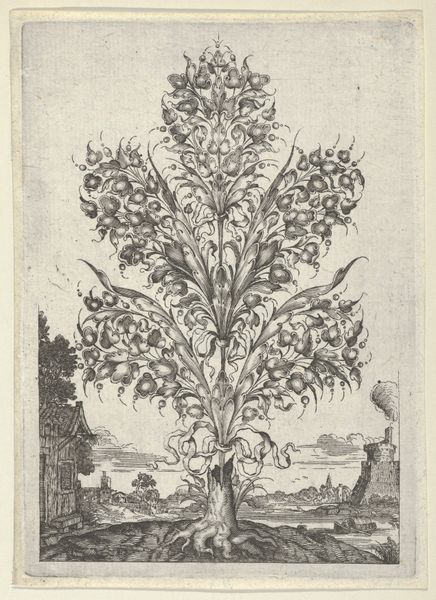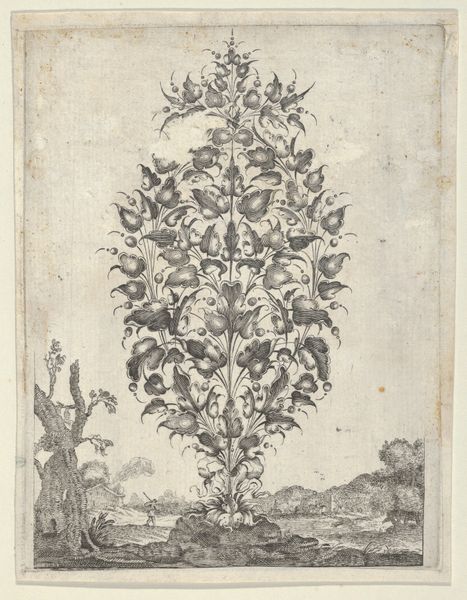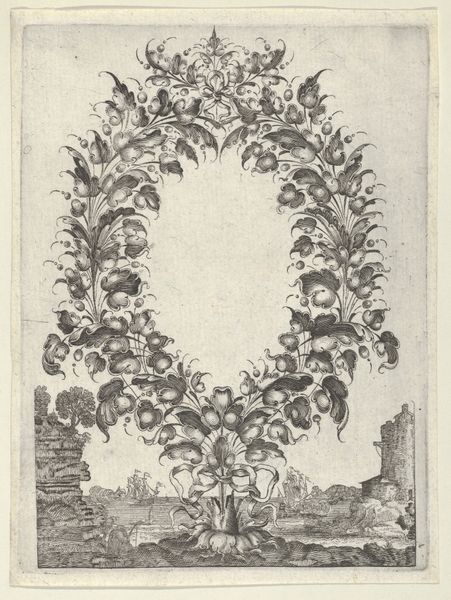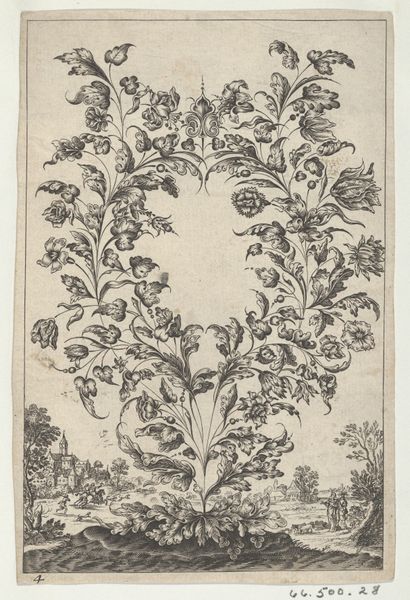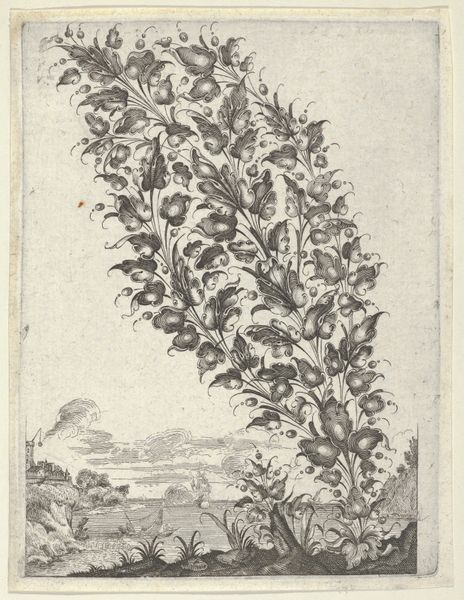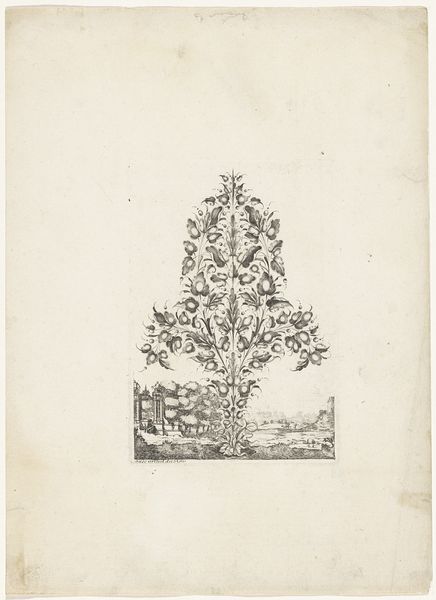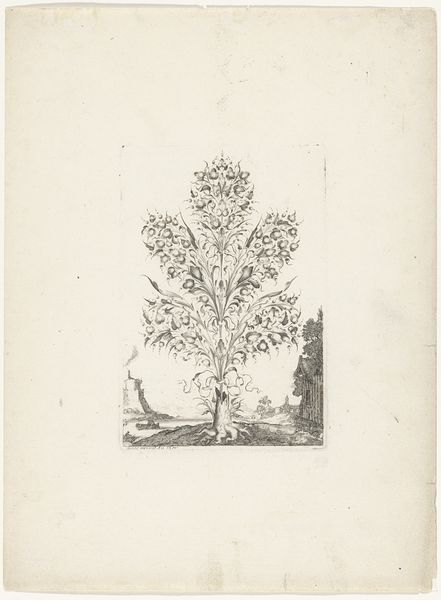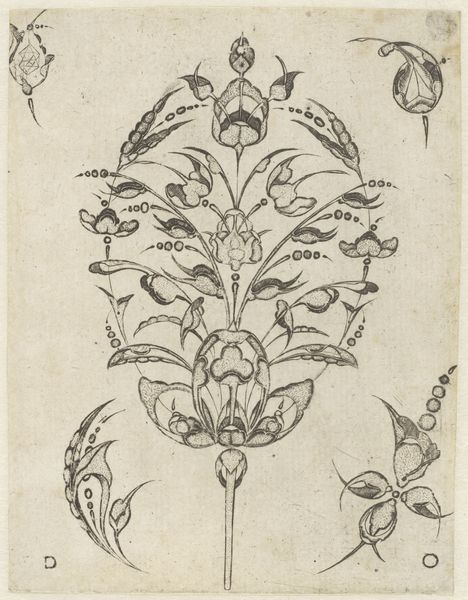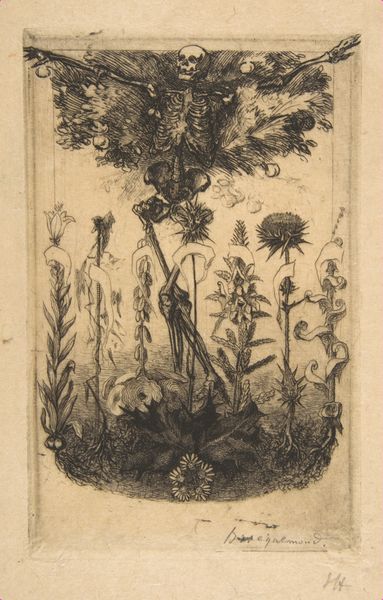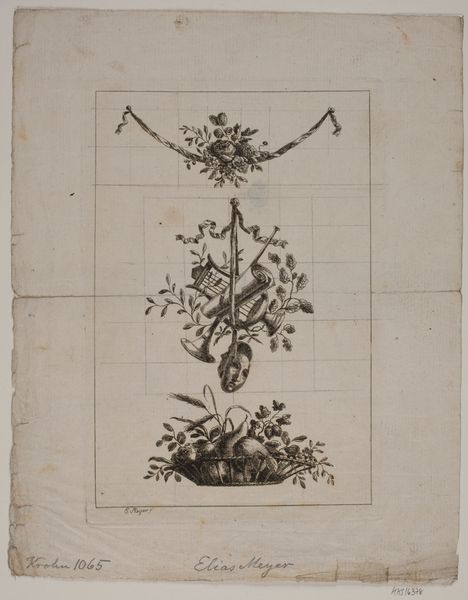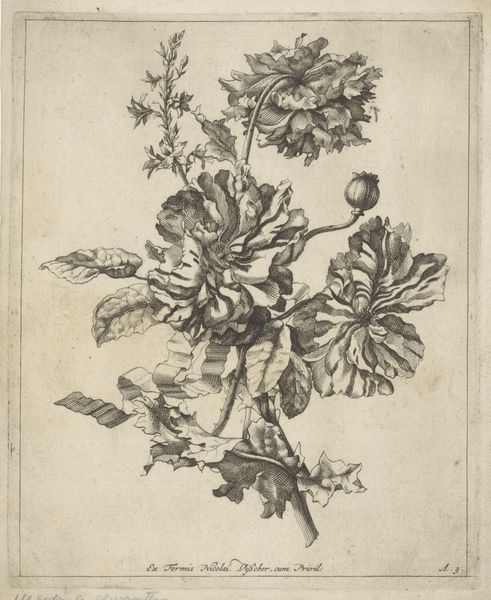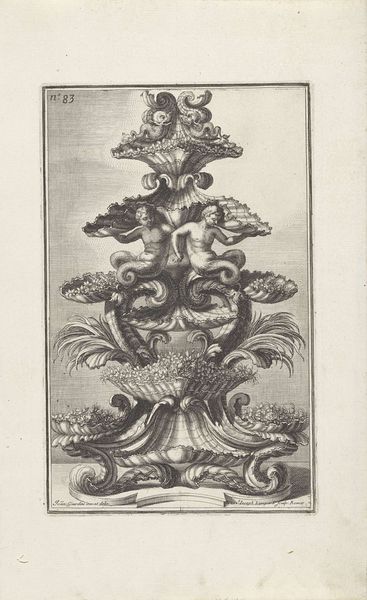
Goldsmith's Bouquet, from Newes Lauberbuechlein 1628 - 1666
0:00
0:00
drawing, graphic-art, print, engraving
#
drawing
#
graphic-art
#
baroque
# print
#
landscape
#
line
#
engraving
Dimensions: Sheet: 6 × 4 1/2 in. (15.2 × 11.4 cm)
Copyright: Public Domain
This "Goldsmith’s Bouquet" was made by Peter Aubry II in the 17th century, using etching on paper. The fine lines and intricate details of the floral design speak to the skills involved in the etching process. The image was created by drawing into a wax-covered metal plate with a sharp needle, which when placed in acid creates an impression in the metal. Ink is then applied to the plate and paper pressed onto it, transferring the design. Given that Aubry was working in a printmaking workshop, it’s fair to say that he was an artisan but also a wage laborer. It is through the skilled labor and artistry involved, that the print transcends mere function and becomes a work of art. Considering the social and historical context in which this print was created, we see how closely craft, labor, and artistry are intertwined. This challenges traditional boundaries between fine art and craft, highlighting the importance of materials, making, and context in understanding the full meaning of an artwork.
Comments
No comments
Be the first to comment and join the conversation on the ultimate creative platform.
